Themed collection Challenges in organometallic & coordination chemistry: in celebration of Geoff Cloke’s 65th birthday

The Chatt reaction: conventional routes to homoleptic arenemetalates of d-block elements
Homoleptic arenemetalates, including the depicted [K(18-crown-6)]2[Hf(C14H10)3], are often useful sources of “naked” metal anions and have been obtained for several transition metals via the Chatt reaction, named in honor of Joseph Chatt, a giant of chemistry.
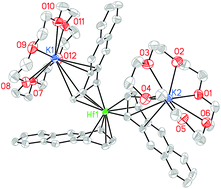
Dalton Trans., 2019,48, 9538-9563
https://doi.org/10.1039/C8DT05029E
Synthesis of organometallic pentalenide complexes
Challenges and opportunities in the synthesis of pentalenide complexes are reviewed from a practical point of view.
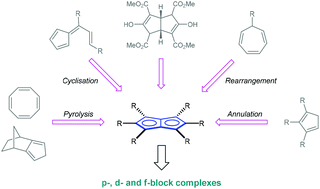
Dalton Trans., 2019,48, 5107-5124
https://doi.org/10.1039/C9DT00689C
Cu(I)–O2 oxidation reactions in a fluorinated all-O-donor ligand environment
This perspective highlights the effects of O-donor fluorinated ligands on Cu–O2 chemistry, with intermediates capable of substrate oxidation reactivity.
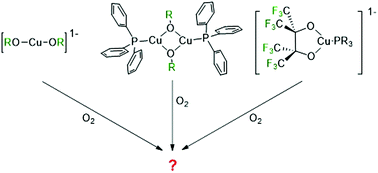
Dalton Trans., 2019,48, 4759-4768
https://doi.org/10.1039/C8DT05028G
End-functional polyolefins for block copolymer synthesis
Block copolymers containing polyolefin (red) and polar (blue) segments may be synthesised via end-functionalised polyolefins from metal-catalysed routes.
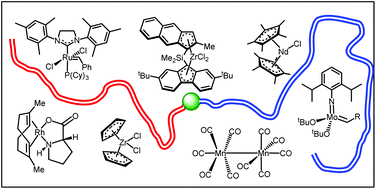
Dalton Trans., 2019,48, 3521-3530
https://doi.org/10.1039/C9DT00087A
A reduction series of neodymium supported by pyridine(diimine) ligands
A series of reduced PDI neodymium complexes by the PDI ligand acting as an electron sink.

Dalton Trans., 2019,48, 8021-8025
https://doi.org/10.1039/C9DT00679F
Phosphine-promoted ring-opening of benzisothiazolinate ligands at a nickel(II) centre: a convenient synthesis of Ni(II)-thiolate complexes
Phosphines react with the benzisothiazolinate (bit) paddlewheel dimer, [Ni2(μ-bit)4·2H2O], resulting in sulfur–nitrogen bond scission and a series of unexpected transformations leading to novel Ni(II) complexes containing 2-cyanophenylthiolate and related thiolate ligands.
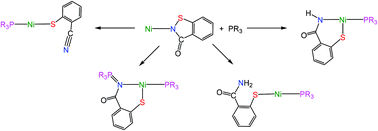
Dalton Trans., 2019,48, 5520-5522
https://doi.org/10.1039/C9DT00953A
Molecular and electronic structure of the dithiooxalato radical ligand stabilised by rare earth coordination
Coordinating rare earth ions to bis(dithiooxalato)nickel produces the first structurally characterised complexes possessing the elusive dithiooxalato radical ligand.
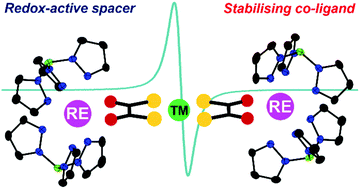
Dalton Trans., 2019,48, 5491-5495
https://doi.org/10.1039/C9DT00688E
Solvent-free anhydrous Li+, Na+ and K+ salts of [B(3,5-(CF3)2C6H3)4]−, [BArF4]−. Improved synthesis and solid-state structures
We report an alternative, improved, multigram scale (∼20 g, 60–70% yield) preparation of solvent-free anhydrous Li[BArF4], Na[BArF4] and K[BArF4], and the corresponding single-crystal X-ray characterisation of [Li(H2O)][BArF4], Na[BArF4]˙ and K[BArF4].
![Graphical abstract: Solvent-free anhydrous Li+, Na+ and K+ salts of [B(3,5-(CF3)2C6H3)4]−, [BArF4]−. Improved synthesis and solid-state structures](/en/Image/Get?imageInfo.ImageType=GA&imageInfo.ImageIdentifier.ManuscriptID=C9DT00235A&imageInfo.ImageIdentifier.Year=2019)
Dalton Trans., 2019,48, 3551-3554
https://doi.org/10.1039/C9DT00235A
The surprisingly facile formation of Pd(I)–phosphido complexes from ortho-biphenylphosphines and palladium acetate
Heating Pd(OAc)2 with ortho-biphenylphosphine ligands in alcoholic solvents gives facile P–C bond-cleavage, yielding Pd(I)-dimers bridged by phosphide ligands.

Dalton Trans., 2019,48, 3539-3542
https://doi.org/10.1039/C8DT04926B
Oxidative addition of arsenic halides to platinum(0)
AsCl3 and AsBr3 are shown to undergo oxidative addition to Pt(0) complexes. With AsCl3, a single As–Cl oxidative addition step selectively yields (chloro)(arsenido)-Pt(II) complexes, whereas with AsBr3 both monomeric and cluster compounds are produced.

Dalton Trans., 2019,48, 3547-3550
https://doi.org/10.1039/C8DT04995E
A convenient method for the generation of {Rh(PNP)}+ and {Rh(PONOP)}+ fragments: reversible formation of vinylidene derivatives
A new entry point into the organometallic chemistry of reactive rhodium(I) pincer complexes.
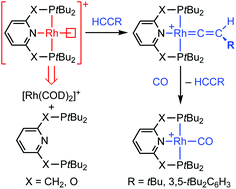
Dalton Trans., 2019,48, 2877-2880
https://doi.org/10.1039/C8DT05049J
A tetranuclear CuII2DyIII2 coordination cluster as a Suzuki (C–C) coupling reaction promoter
The air stable and high yielding tetranuclear coordination cluster [CuII2DyIII2L4(NO3)2(CH3CN)2]·2(CH3CN) promotes the Suzuki coupling reaction of phenylboronic acid with substituted aryl halides under environmentally benign conditions.
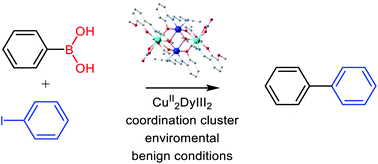
Dalton Trans., 2018,47, 17202-17205
https://doi.org/10.1039/C8DT04371J
Reactivity of a magnesium diboranate with organic nitriles
Reactions of a diboranate with organic nitriles result in B–C bond formation and variable behaviour that is rationalised as due to substituent-dependent modulation in the basicity and electrophilicity of Mg-coordinated nitrile intermediates.

Dalton Trans., 2021,50, 1283-1292
https://doi.org/10.1039/D0DT04016A
Dioxygen controls the nitrosylation reactions of a protein-bound [4Fe4S] cluster
Iron–sulfur clusters are exceptionally tuneable protein cofactors, and as one of their many roles they are involved in biological responses to nitrosative stress.
![Graphical abstract: Dioxygen controls the nitrosylation reactions of a protein-bound [4Fe4S] cluster](/en/Image/Get?imageInfo.ImageType=GA&imageInfo.ImageIdentifier.ManuscriptID=C9DT00924H&imageInfo.ImageIdentifier.Year=2019)
Dalton Trans., 2019,48, 13960-13970
https://doi.org/10.1039/C9DT00924H
Oxidation of uranium(IV) mixed imido–amido complexes with PhEEPh and to generate uranium(VI) bis(imido) dichalcogenolates, U(NR)2(EPh)2(L)2
This work provides new routes for the conversion of U(IV) into U(VI) bis(imido) complexes and offers new information on the manner in which the U(VI) compounds form.
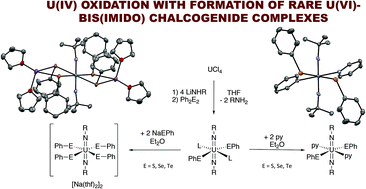
Dalton Trans., 2019,48, 10865-10873
https://doi.org/10.1039/C9DT00680J
A complete series of uranium(IV) complexes with terminal hydrochalcogenido (EH) and chalcogenido (E) ligands E = O, S, Se, Te
Theoretical and experimental examination of the bonding situation in uranium complexes bearing terminal hydrochalcogenido and chalcogenido ligands.
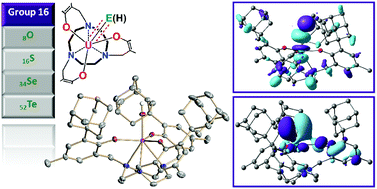
Dalton Trans., 2019,48, 10853-10864
https://doi.org/10.1039/C9DT00530G
Reactivity of the carbodiphosphorane, (Ph3P)2C, towards main group metal alkyl compounds: coordination and cyclometalation
The zerovalent carbodiphosphorane, (Ph3P)2C, reacts with Me3Al and Me3Ga to afford the adducts, [(Ph3P)2C]MMe3 (M = Al, Ga), whereas Me2Zn and Me2Mg react to afford mononuclear and dinuclear cyclometalated derivatives.

Dalton Trans., 2019,48, 9139-9151
https://doi.org/10.1039/C9DT00678H
Cyaphide–alkynyl complexes: metal–ligand conjugation and the influence of remote substituents
A series of cyaphide–alkynyl complexes exhibits significant cooperativity between the electron accepting “–C![[triple bond, length as m-dash]](https://www.rsc.org/images/entities/char_e002.gif) P” ligand and remote alkynyl substituents, indicative of long-range communication.
P” ligand and remote alkynyl substituents, indicative of long-range communication.
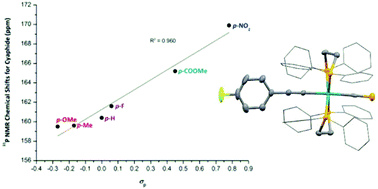
Dalton Trans., 2019,48, 8131-8143
https://doi.org/10.1039/C9DT01071H
Utilising an anilido-imino ligand to stabilise zinc-phosphanide complexes: reactivity and fluorescent properties
Anilido-imino-based ligands have been used to generate new zinc complexes, including rare zinc phosphanide and phosphinodichalcogenoate complexes. The fluorescence intensity of these compounds is highly dependent upon the non-ancillary ligand.
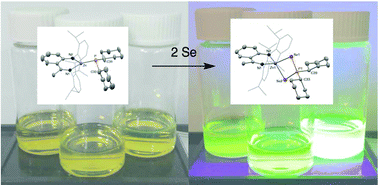
Dalton Trans., 2019,48, 8094-8105
https://doi.org/10.1039/C9DT00681H
Alkali metal and stoichiometric effects in intermolecular hydroamination catalysed by lithium, sodium and potassium magnesiates
Cooperative catalytic hydroamination of diphenylacetylene and styrene is accomplished by magnesiates with efficiency dependent on the alkali metal and monoanionic or dianionic nature of the ate with dianionic [(PMDETA)2K2Mg(CH2SiMe3)4] performing best.

Dalton Trans., 2019,48, 8122-8130
https://doi.org/10.1039/C9DT00923J
Rydberg state mediated multiphoton ionization of (η7-C7H7)(η5-C5H5)Cr: DFT-supported experimental insights into the molecular and electronic structures of excited sandwich complexes
The first REMPI/DFT study of a mixed sandwich complex reveals fine ligand effects on structural transformations accompanying electronic excitation.
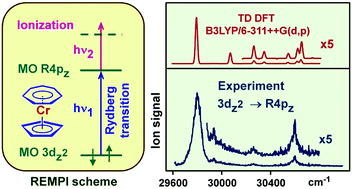
Phys. Chem. Chem. Phys., 2019,21, 9665-9671
https://doi.org/10.1039/C9CP00888H
Reversible temperature-induced polymorphic phase transitions of [Y(OAr)3] and [Ce(OAr)3] (Ar = 2,6-tBu2-4-MeC6H2): interconversions between pyramidal and planar geometries
Exploring the balance of energetics between planar and pyramidal forms of [Y(O-2,6-tBu2-4-MePh)3] and related complexes.
![Graphical abstract: Reversible temperature-induced polymorphic phase transitions of [Y(OAr)3] and [Ce(OAr)3] (Ar = 2,6-tBu2-4-MeC6H2): interconversions between pyramidal and planar geometries](/en/Image/Get?imageInfo.ImageType=GA&imageInfo.ImageIdentifier.ManuscriptID=C9CE00184K&imageInfo.ImageIdentifier.Year=2019)
CrystEngComm, 2019,21, 2884-2892
https://doi.org/10.1039/C9CE00184K
Carbon dioxide reduction by dinuclear Yb(II) and Sm(II) complexes supported by siloxide ligands
Low-coordinate dinuclear lanthanide complexes supported by siloxides effect the reduction of carbon dioxide to both carbonate and oxalate, but the cooperative binding of CO2 to the two Ln(II) cations in the dimer favours oxalate formation.

Dalton Trans., 2019,48, 6100-6110
https://doi.org/10.1039/C9DT00554D
Versatility of cyclooctatetraenyl ligands in rare earth metal complexes of the [M2(COT)3(THF)2] (M = Y and La) type
Two new organometallic cyclooctatetraenyl complexes of the type [M2(COT)3(THF)2] (M = Y and La) have been prepared, using optimized synthetic procedures, and fully characterized by X-ray diffraction analysis, IR and 1H NMR spectroscopies.
![Graphical abstract: Versatility of cyclooctatetraenyl ligands in rare earth metal complexes of the [M2(COT)3(THF)2] (M = Y and La) type](/en/Image/Get?imageInfo.ImageType=GA&imageInfo.ImageIdentifier.ManuscriptID=C9DT00868C&imageInfo.ImageIdentifier.Year=2019)
Dalton Trans., 2019,48, 5614-5620
https://doi.org/10.1039/C9DT00868C
Dioxygen reacts with metal–carbon bonds in thorium dialkyls to produce bis(alkoxides)
Reaction of molecular O2 with thorium alkyl complexes supported by amidinates and guanidinates generates thorium alkoxides via O2 insertion into thorium-carbon bonds.
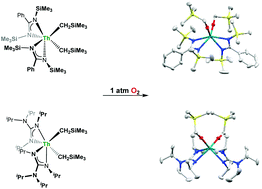
Dalton Trans., 2019,48, 5569-5573
https://doi.org/10.1039/C9DT00811J
Applications of boroxide ligands in supporting small molecule activation by U(III) and U(IV) complexes
The boroxide ligand [OBAr2]− (Ar = Mes, Trip) is shown to be able to support both UIII and UIV centres for the first time.
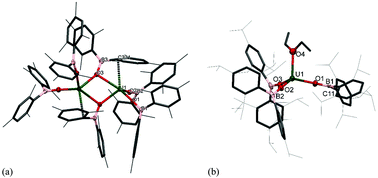
Dalton Trans., 2019,48, 4894-4905
https://doi.org/10.1039/C8DT05051A
Polynuclear alkoxy–zinc complexes of bowl-shaped macrocycles and their use in the copolymerisation of cyclohexene oxide and CO2
Tri- and tetranuclear macrocyclic zinc alkoxides act as catalysts for the ring-opening polymerisation of epoxides and carbon dioxide.
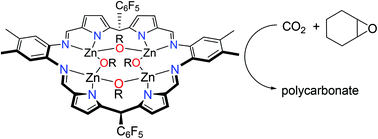
Dalton Trans., 2019,48, 4887-4893
https://doi.org/10.1039/C9DT00595A
Synthesis, characterisation and redox properties of anti-bimetallic permethylpentalene complexes
Anti-bimetallic transition metal complexes based on the permethylpentanyl ligand: anti-(MCpR5)2Pn* (M = Fe, Co and Ni) have been synthesised and fully characterised.

Dalton Trans., 2019,48, 4263-4273
https://doi.org/10.1039/C8DT05054F
Calcium formamidinate derivatives by hydride insertion of carbodiimides
Insertion reactions of N,N′-dialkyl and N,N′-diaryl carbodiimides with a dimeric calcium hydride provide formamidinate derivatives whose structures on the steric demands of the carbodiimide reagent.

Dalton Trans., 2019,48, 4248-4254
https://doi.org/10.1039/C8DT05107K
Heterobimetallic ruthenium–zinc complexes with bulky N-heterocyclic carbenes: syntheses, structures and reactivity
Addition of ZnMe2 to cationic and neutral ruthenium hydride complexes bearing NHC ligands affords new Ru–Zn heterobimetallic complexes.

Dalton Trans., 2019,48, 4176-4189
https://doi.org/10.1039/C8DT05023F
Magnesium, calcium and zinc [N2N′] heteroscorpionate complexes
A series of Group 2 and 12 heteroscorpionate complexes is reported.
![Graphical abstract: Magnesium, calcium and zinc [N2N′] heteroscorpionate complexes](/en/Image/Get?imageInfo.ImageType=GA&imageInfo.ImageIdentifier.ManuscriptID=C8DT04985H&imageInfo.ImageIdentifier.Year=2019)
Dalton Trans., 2019,48, 4124-4138
https://doi.org/10.1039/C8DT04985H
Investigation of a zirconium compound for redox switchable ring opening polymerization
Redox switchable catalysis with a ferrocene Schiff base zirconium complex allowed the synthesis of diblock and triblock copolymers.
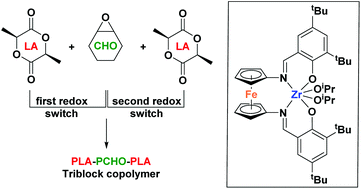
Dalton Trans., 2019,48, 2996-3002
https://doi.org/10.1039/C9DT00212J
A study of di(amino)stibines with terminal Sb(III) hydrogen-ligands by X-ray- and neutron-diffraction
The structure of a di(amino)stibine has been determined by neutron diffraction giving the first accurate parameters for the SbIII–H bond.
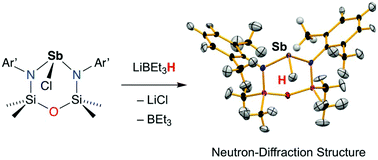
Dalton Trans., 2019,48, 2953-2958
https://doi.org/10.1039/C8DT05113E
Computational analysis of M–O covalency in M(OC6H5)4 (M = Ti, Zr, Hf, Ce, Th, U)
Trends in covalency of structurally analogous d and f element compounds are explored over changes in the M–O bond distance.
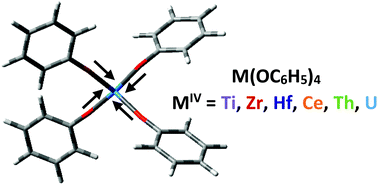
Dalton Trans., 2019,48, 2939-2947
https://doi.org/10.1039/C8DT05094E
Isolation of reactive Ln(II) complexes with C5H4Me ligands (CpMe) using inverse sandwich countercations: synthesis and structure of [(18-crown-6)K(μ-CpMe)K(18-crown-6)][CpMe3LnII] (Ln = Tb, Ho)
We report that crystallographically-characterizable Ln(II) complexes of Tb and Ho can be isolated by reducing CpMe3Ln(THF) with KC8 in THF in the presence of 18-crown-6 (18-c-6).
![Graphical abstract: Isolation of reactive Ln(ii) complexes with C5H4Me ligands (CpMe) using inverse sandwich countercations: synthesis and structure of [(18-crown-6)K(μ-CpMe)K(18-crown-6)][CpMe3LnII] (Ln = Tb, Ho)](/en/Image/Get?imageInfo.ImageType=GA&imageInfo.ImageIdentifier.ManuscriptID=C8DT03890B&imageInfo.ImageIdentifier.Year=2018)
Dalton Trans., 2018,47, 17285-17290
https://doi.org/10.1039/C8DT03890B
Selective signalling of glyphosate in water using europium luminescence
Selective sensing of glyphosate in the micromolar regime in water.

Dalton Trans., 2018,47, 16145-16154
https://doi.org/10.1039/C8DT03823F
About this collection
This special collection of Dalton Transactions is to mark the 65th birthday of mentor, friend and colleague, Professor Geoff Cloke. The collection highlights emerging trends in organometallic and coordination chemistry, reflecting the many diverse areas of where Geoff’s work has impacted the field, including catalysis and small-molecule activation chemistry involving transition metal and f-block elements, chemical bonding, mechanism, spectroscopy and magnetism.